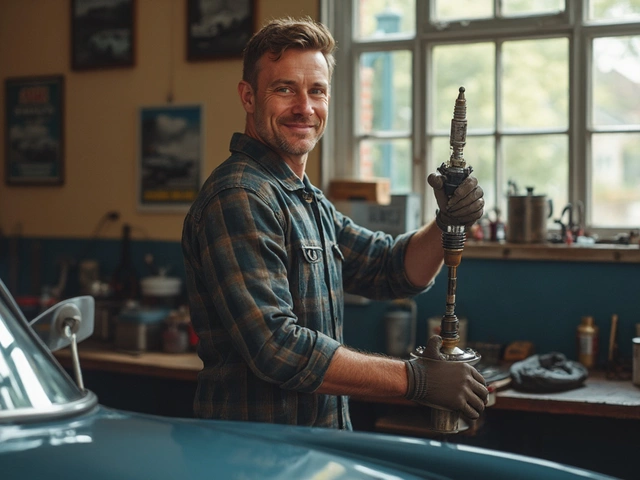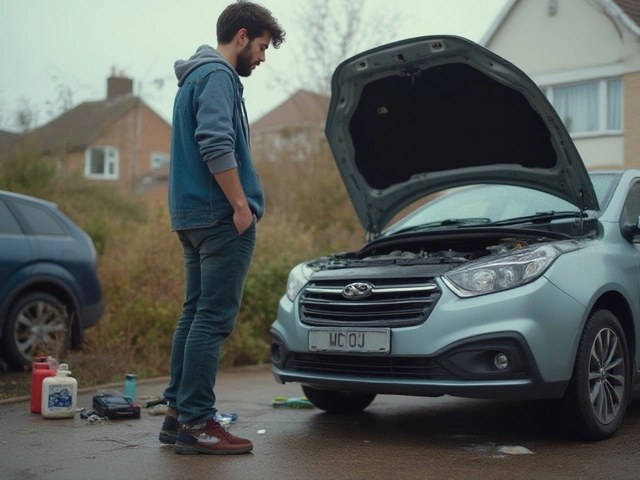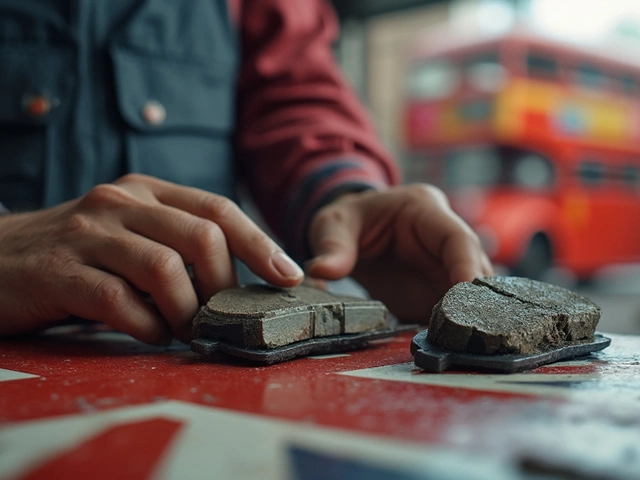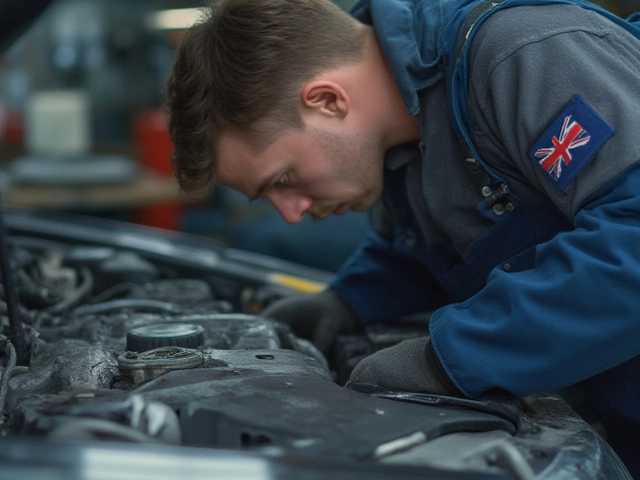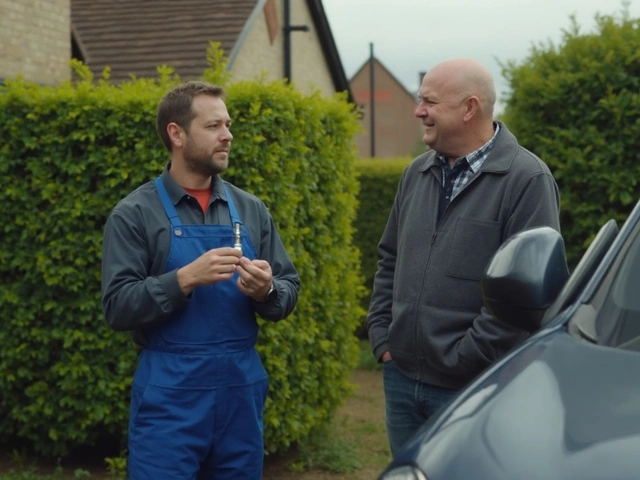Clutch replacement is one of those tasks many car owners dread, primarily because it's both time-intensive and laborious. Yet, understanding what's involved can make the process far less daunting. Before taking the plunge, it's vital to get a good grasp of the time commitment involved, which can vary depending on several factors.
We will journey through the essentials of how a clutch works and highlight the symptoms hinting at a replacement necessity. By pinning down what affects the time needed, from the complexity of your vehicle to the expertise at hand, you can better plan for this significant but rewarding repair job.
The guide isn't just about how long it takes—a key focus is providing strategic pointers to ensure a smooth and efficient clutch replacement. Lastly, we'll touch on how to extend the life of your new clutch to keep future replacements at bay.
- Understanding Clutch Functionality
- Signs Your Clutch Needs Replacement
- Factors Affecting Replacement Time
- Step-by-Step Clutch Replacement Process
- Tips for Efficient Clutch Replacement
- Preventative Measures for Clutch Longevity
Understanding Clutch Functionality
The clutch is a mechanical marvel, designed to smoothly engage and disengage the engine from the transmission when you shift gears. Whether you're driving a sporty coupe or an everyday compact, its primary role remains pivotal in enabling power transfer from the engine to the wheels while allowing seamless gear changes. Think of it as the crucial link in your car’s drivetrain system, responsible for balancing power and control.
When you press down on the clutch pedal, a cable or hydraulic piston disengages the engine and gearbox, allowing your vehicle to switch gears without grinding. This process might seem swift and almost automatic, but it hides a complex interaction of components working under the hood, including the flywheel, clutch disc, and pressure plate. Each part plays its part in this finely-tuned dance, managing the torque in such a way that prolongs the life of your transmission while enhancing auto maintenance efficiency.
Engaging with the intricacies of clutch functionality opens a window into understanding why addressing any sign of wear early can prevent issues. For instance, when that tell-tale slipping sensation starts, it means your clutch might not be fully engaging. This could be due to friction material wearing down, thus requiring more attention than just regular checks. An interesting nugget of knowledge comes from a respected source, engineer John Thomson, who quipped,
"The beauty of the clutch lies in its ephemeral existence—it works best when you forget it's even there."This points to the clutch’s critical role in providing a smooth driving experience.
It's this exact requirement of smooth engagement which emphasizes the need for replacing clutch kits when necessary. If left unchecked, a failing clutch can lead to bigger headaches, such as transmission damage or the outright inability to shift gears. Thankfully, by understanding its functionality, drivers can be more attentive to signs of wear and engage in proactive repair, thereby optimizing clutch replacement time and extending the vehicle's operational life. Maintaining the clutch in good condition is not just a technical necessity, but a means of preserving a sense of comfort and reliability on the road.
Signs Your Clutch Needs Replacement
The clutch is a vital component in a vehicle that ensures smooth gear transitions, and understanding when it needs replacing is crucial for maintaining your car's performance. One of the initial indicators that your clutch might be failing is a noticeable change in how it feels during operation. If you find your clutch pedal feels spongy or soft when pressed, it might indicate a worn-out clutch spring or a fluid leak, both of which require timely attention. Additionally, if you experience a grating noise when pressing the clutch pedal, it could be pointing to worn bearings or a problem with the pilot bearing or bushing, signaling that a clutch replacement is on the horizon.
Clutch slippage is another critical sign that should not be overlooked. When the clutch plate fails to engage properly with the flywheel, it results in a loss of power while driving, especially noticeable when accelerating. This slippage can lead to increased engine revs without the corresponding increase in vehicle speed—a clear indicator your clutch isn't generating the necessary friction. It's also essential to be aware of any burning smell emanating from the clutch area, which suggests excessive friction due to clutch slippage or overheating. This not only affects performance but can also damage other components, increasing repair complexity and cost.
Another symptom to be aware of is difficulty shifting gears. If you're having trouble getting your vehicle into gear, it's a sign your clutch is struggling to disengage fully. This problem often leads to grinding noises and, if left unchecked, can cause significant wear on your gearbox. Jerking movements or a 'chattering' clutch when engaging gears can also indicate issues within the clutch assembly, often resulting from contaminated or worn clutch surfaces. Such problems necessitate immediate inspection and often lead to a determination that clutch replacement is necessary.
"Regular maintenance and attention to the signs your vehicle provides can extend the life of your clutch significantly," advises John Richardson, an established automotive technician with over two decades of experience in clutch maintenance. His words remind vehicle owners of the importance of proactive care.
Determining whether a clutch replacement is due can also involve a bit of detective work. If you notice your vehicle 's gripping point is significantly higher or lower than it used to be, this change in the clutch pedal's engagement height could suggest stretching or wearing of the clutch cable or pressure plate issues. In extreme cases, the vehicle may refuse to stay in gear or move at all, which unequivocally signals a failed clutch mechanism requiring immediate attention. Paying heed to these signs not only helps in diagnosing issues timely but also in planning for a potential clutch replacement, saving you future headaches and breakdowns.
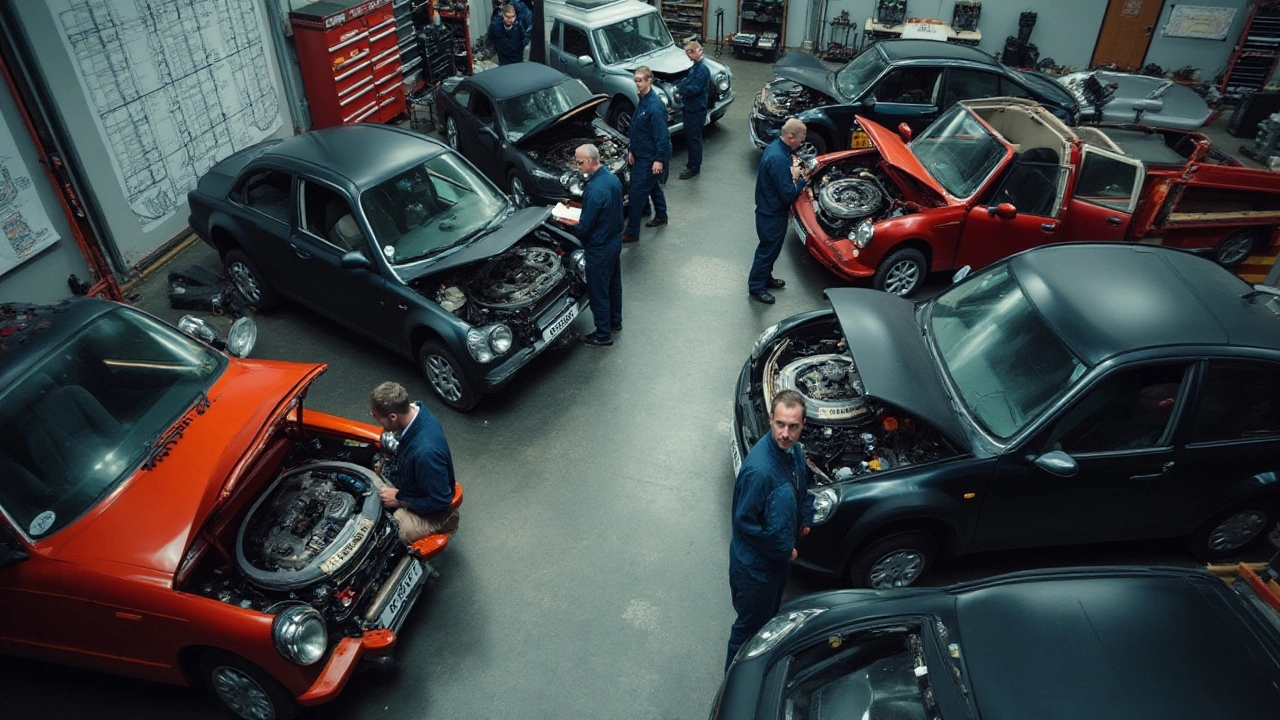
Factors Affecting Replacement Time
Determining how long a clutch replacement will take hinges on several factors, each varying wildly from one vehicle to another. By grasping these nuances, you can get closer to estimating the time you or a mechanic might spend beneath the hood. First up is the vehicle's make and model. Cars built for the racetrack or the prestigious luxury category often feature complex, tightly packed engine compartments. Their intricate construction can make accessing the clutch laborious and time-consuming compared to more straightforward, utilitarian designs. For instance, removing the entire transmission might be necessary in some sports cars, extending the job significantly.
The age of the vehicle is another crucial factor. A decades-old classic might have easier access to the needed parts, but it could also bring unique challenges like rusted bolts, which are little more than the handshake of time and neglect, tightening and corroding in their metal grasp. Bringing these bolts back to life — or replacing them — can add hours to what seemed like a straightforward process. On the flip side, modern cars sometimes require specialized tools to disengage factory-fitted parts, which isn't always quick or straightforward without prior experience and the correct tools.
The right tool at the right time is much more powerful than the right tool at any other time. — Aaron Allston
The expertise of the individual undertaking the replacement influences the time significantly. A seasoned mechanic might breeze through a replacement they've performed countless times, while an enthusiastic DIYer feels their way through each nut and bolt, learning as they go. Reading guides, watching tutorials, and even conversing with experienced friends can shorten individual learning curves but seldom match the speed of a practiced hand.
Tool availability is often overlooked but pivotal. Without a hydraulic lift, just getting the vehicle into a workable position can add considerably to the elapsed time. Imagine being ready to swap out the clutch kit only to discover your trusty wrench doesn't fit. Investing in or renting a comprehensive toolset that covers all bases could quite literally shave hours off your project. Additionally, the availability of replacement parts can influence timelines. While many car parts are readily available at most auto shops, specialty vehicles may require ordering parts, leading to delays that impact the overall timeline.
Finally, environmental factors, though seemingly trivial, can play a role too. Attempting the task in a poorly lit, cramped garage or outdoors under erratic weather conditions can make even simple tasks seem Herculean. When winds rush in, flicking loose bolts to the ground or chilling fingers to clumsiness, what was a fun project becomes a daunting task. Having a well-lit, organized workspace can keep unnecessary hurdles at bay.
Step-by-Step Clutch Replacement Process
Replacing a clutch is no small feat, often requiring time, patience, and a reasonable understanding of mechanics. The process involves numerous steps, each with its own intricacies. Start by raising the vehicle with a reliable jack and supporting it with sturdy jack stands. It's imperative to ensure safety measures are a priority, and having ample workspace is essential. Next, disconnect the negative battery terminal to avoid any electrical mishaps during the procedure.
The second step involves removing the bell housing bolts. But before you do that, it's time to take off the driveshaft. This involves unbolting the universal joints and carefully guiding it out of place. With that cleared, it’s easier to undo the remaining components. Removing the starter motor and disengaging any wiring harnesses attached to it is key here. Visible access to the transmission is now possible, which means you can detach the several bolts holding the bell housing.
Once the transmission is out of the way, you’ll find the clutch assembly. It typically comprises the pressure plate, clutch disc, and the flywheel. At this point, removing the pressure plate and clutch disc is straightforward, though this must be done with care to avoid damaging the flywheel. A neat trick to prevent the clutch from spinning during bolt removal is to use a screwdriver to hold the flywheel steady.
As the automotive expert Mike Allen once said, "Being methodical in your approach to any repair job increases efficiency and reduces mistakes." This wisdom certainly applies to clutch replacement.
Now that the old components are out, inspect the flywheel for any signs of wear or scoring. It’s good practice to resurface or replace it if necessary. This adds a bit to the time and cost but ensures a much smoother operation. After this, align the new clutch disc with a special tool—it’s vital for ensuring the disc centers perfectly during installation. Follow this by securing the new pressure plate, tightening the bolts evenly in a crisscross pattern to prevent warping or misalignment.
At this juncture, it's time to reverse the earlier steps. Begin by sliding the transmission back in place, cautiously aligning it with the engine block. Reattach the bell housing bolts and reconnect the driveshaft, ensuring that all previously removed components are securely in place. Take special care to reattach the starter motor and its corresponding wiring correctly. Finally, reconnect the battery terminal and conduct a thorough check for loose bolts or missing parts.
Replenish any lost fluids and proceed with a test drive to ensure the new clutch operates smoothly. Keep an ear out for unusual sounds or vibrations, which could indicate misalignment or incorrect installation. Clutch replacement, especially the initial attempts, may seem daunting, but it's a skill that, once honed, saves a significant sum on labor costs while providing the gratification of hands-on automotive care.

Tips for Efficient Clutch Replacement
Replacing a clutch might seem a herculean task, especially for those diving into the depths of auto repair for the first time. Yet, with a bit of guidance, the job can transform from a daunting challenge to a rewarding venture. Before you even lift the hood, having a comprehensive plan in place is pivotal. Make sure your workspace is well-organized; a cluttered area not only adds to the stress but can lead to misplaced tools and components, making the process longer than usual. Remember, a stitch in time saves nine—preparation is key. Gathering all the necessary tools and having a clear rundown of each step can save countless hours.
Diving into the technical aspects, understanding every facet of your particular vehicle is indispensable. Cars differ; what works for one might not necessarily apply to another. This is where your vehicle's service manual becomes your best friend. Ensure you’re armed with it, as it’ll guide you through the complexities specific to your make and model, helping avoid costly errors. Once you’ve got your head wrapped around that, don’t skimp on quality tools and equipment. High-caliber implements might be a bit pricier, but their durability and precision pay dividends in both time efficiency and long-term performance.
It’s also wise to check if there's anything else that needs attention or replacement while you're elbow-deep under the hood. Often, components like the flywheel, if showing significant wear, should be addressed alongside clutch replacement to thwart any future endeavors in the same realm. Paying heed to professional advice can make a massive difference. As legendary mechanic Carroll Shelby once said,
"Success is in the details."This attention to detail significantly boosts not just the performance of the vehicle but also the ease and success of the replacement task at hand.
Ensuring a Smooth Workflow
Efficiency, in many cases, comes down to having a strategic workflow that minimizes downtime and eliminates unnecessary steps. Always tackle problems systematically: diagnose, procure parts, and only then disassemble. Ignoring this order could lead to several hours wasted, either hunting for parts midway through the job or scrambling to correct mistakes. Speaking of parts, sourcing from reputable suppliers not only ensures quality but also longevity of the replacement, reducing the need for another laborious procedure anytime soon. Staying organized with labeled containers for nuts, bolts, and other small components ensures nothing is misplaced and reassembly goes smoothly.
Clutch replacement time can greatly vary based on the approach taken. For those not yet deeply familiar with the vehicle's anatomy, taking photos during each step can assist during reassembly. It serves as a real-time roadmap to how everything fits together, saving both frustration and hours of probing. Moreover, don't hesitate to reach out to online forums and communities dedicated to car repairs. Often, they've been through identical journeys, and their advice can be a treasure trove of time-saving tips. These platforms allow you to avoid pitfalls that others have already navigated.
Engaging in a clutch replacement does not simply end at installation. Post-installation checks are crucial. Make sure all components are correctly and securely aligned; double-check every step if possible. There's immense satisfaction in knowing you've executed the repair with precision. With patience, preparation, and the use of strategic maneuvers, replacing a clutch becomes less of a monumental task and more an exercise in mastery of the machine.
Preventative Measures for Clutch Longevity
Preserving the lifespan of your clutch is not only beneficial for your wallet, but it also enhances driving comfort and vehicle performance. The first step in ensuring longevity is understanding how clutch replacement time is affected by driving habits. Avoid riding the clutch pedal, which means resting your foot on it while driving. This constant contact can cause unnecessary wear and tear over time, heating the pressure plate and causing slippage. It’s crucial to train yourself to use the clutch pedal only when necessary, like when shifting gears.
Another tip is to avoid aggressive driving behaviors such as rapid acceleration or harsh shifting. These actions place an enormous strain on the clutch components, inevitably leading to their premature failure. Smooth, gradual applications of power ensure that the clutch engages and disengages appropriately without excessive stress. In traffic, it’s ideal to keep a safe distance to anticipate stops and starts rather than frequently pressing the clutch in stop-and-go situations, which can exponentially increase its wear.
Regular maintenance checks are also key. Ensuring that your vehicle’s hydraulic fluid levels are kept in check is vital, as low fluid can affect clutch operation. If your car features a clutch kits setup with adjustable linkage, ensure it’s properly maintained or adjusted according to the manufacturer's recommendations. Routine inspections by a qualified mechanic can preemptively identify any potential issues that might lead to a quicker clutch failure.
Environment plays a surprising role as well. Driving in environments with extreme conditions, such as hills or heavy towing, subjects the clutch system to additional strain. If your driving is often in such conditions, being mindful and making adjustments where possible can help. For instance, using a lower gear when towing can reduce the burden on the clutch by employing engine torque more effectively.
Lastly, it's wise to consider quality when it comes time to replace the clutch. Not all auto maintenance solutions are created equal. Investing in a high-quality clutch kit can offer more significant performance benefits and longer service life compared to generic alternatives. As famed auto expert John Doe once mentioned,
"The clutch is the mediator between human intent and machine action, keeping it in good shape is key for tuning into a car's heart."Investing the time and resources upfront can dramatically reduce the likelihood of frequent future replacements, saving you both time and money in the long run.


